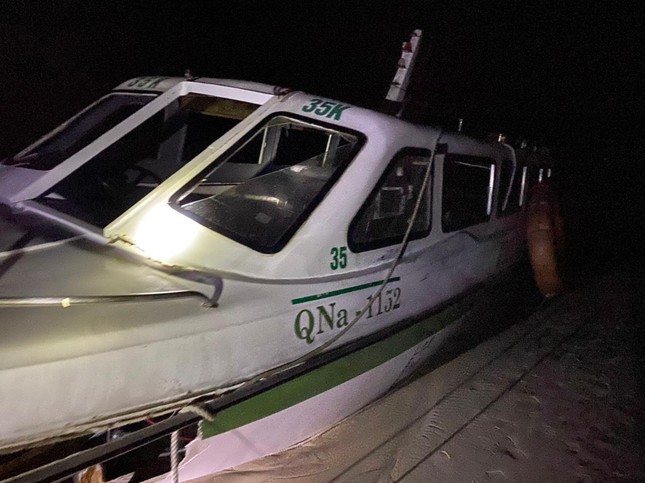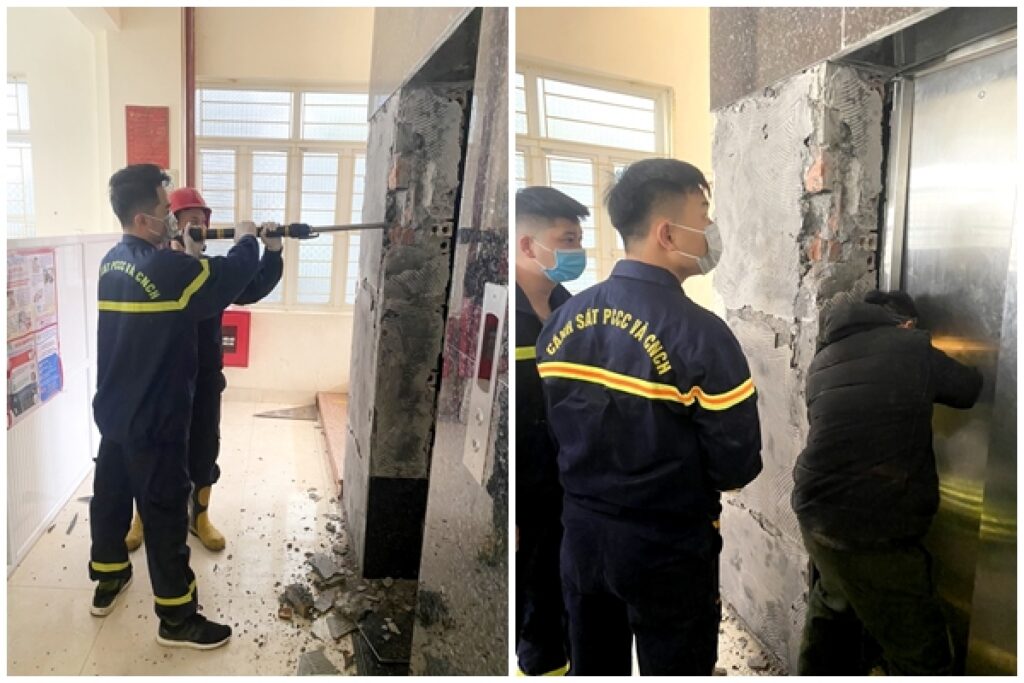The extremely sad case of a canoe sinking that left 17 people dead and missing in Hoi An (Quang Nam) has just shown that potential problems are always hidden and can strike at any time. Suddenly thinking about the problem of elevator safety, although there are no similar serious incidents, if it is not forecasted and taken preventive measures, accident is inevitable. And regardless of the extent of the casualties, it is a pain not only for families with unfortunate loved ones but also for the whole society.
Perhaps even the most insensitive people must shudder to see the news of the canoe sinking on Cua Dai sea because of its tragic nature. When the canoe overturned, water flooded in, the people in distress wearing life jackets floated into the compartment, but due to the tight hood, they could not get out, leading to suffocation when the canoe overturned. Immediately after this incident, people immediately re-checked the conditions to ensure the safety of the driver and the vehicle: the canoe is still safe for inspection until January 2023; permissible gross tonnage with the number of people present; the captain has a class 3 certificate of expertise in inland watercraft and is fully qualified to operate the vessel; Passengers are fully equipped with life jackets.
With such conditions, it has basically ensured a safe trip for tourists. But one cannot expect disaster to strike in the most unexpected, unforeseeable ways. That is when the canoe overturned, water flooded into the compartment, and the hood of the canoe became the key to preventing the escape of tourists when they tried to surface. From before 2018, it was common to use convertible canoes with roofs to transport tourists (SI). But then, the authorities specified that passenger transport must be carried out by SB train (ship closed with a solid roof and surrounding glass, with only one exit in front) with the goal of safer. However, it turned out to be a disaster.

The injured canoe was brought ashore for examination – Photo Vietnamnet
Many opinions have raised the question of whether these policy changes are really reasonable or not? But it seems that “when you have not seen the coffin, you have not shed tears”, all opinions of public, seafarers and even local authorities have been ignored. It is only when the most painful incidents happen, the fait accompli, that people discuss the matter.
Then it’s a matter of how often to monitor standards and norms? If we don’t really get to the bottom of the matter to change the policy, we will only do the top, not solve the root of the problem. The opinions of people and professional associations need to be carefully consulted because they are the ones who understand the reality better than anyone else. Don’t let the unfortunate event happen, we will organize to “learn from experience” and then everything will “sink” into oblivion.
We always aim to improve the safety of vehicles that are potentially dangerous to people. But no matter how much effort, the probability of risk always exists, it is just a matter of how big or small this number is.
Suddenly, I think of a type of vertical transport of people and goods, very familiar to us every day: the elevator. Basically, this vehicle has a very low risk ratio, only 0.00000015% (the worldwide average). I don’t know if this number is so small that it has led to a neglectful mentality, not really attaching importance to elevator safety in Vietnam or not? In fact, there are still dozens of casualties each year related to elevator failure. I do not have the ability to most objectively evaluate this issue, but there are shares for readers to make their own judgments.

The rescue team demolished the elevator to take the victim’s body out in an accident – Photo VOV
Elevators belong to the list of machinery and equipment with strict requirements on occupational safety and are required to be inspected. However, I kept wondering if this particular device is being tested seriously, in compliance with the correct procedures and regulations? In the past, when car is inspected, it was an unwritten law that drivers often had to leave money in the car to “bribe” the inspectors, so as not to be inconvenienced during the registration process. Any equipment and machinery can generate errors after a period of operation, and to overcome that requirement, instead of having to repair and re-adjust the machinery, people use “negative soft mechanism” like I said above. So, are there any similar story in elevator industry?
I also do not know the true capacity of the businesses that are providing repair, maintenance, and services for hundreds of elevators on the market. Well-known businesses are expensive. The rest, I group them into the low segment with any price, it depends on your negotiation. I think that the market for elevator products and services, although there are few businesses participating, is also quite chaotic. You will boldly choose a reputable business, or call a cheap service, your belief is still basically just a feeling. It is this mentality that will affect a lot of your buying decisions that you may have mistakenly thought yourself based on rational logic.
We all want to be wise consumers, but with elevators with extremely complicated electrical, electronic and mechanical structures, how much is your understanding or just zero? Do you know which factors to choose a service based on for a good experience? Not subjective, but I’m sure you also hardly have enough quantitative basis.
The more deeply I dissect such matters, the more I feel like I’m falling into a maze of my own making. And back to the story about elevator safety, I have a rather bewildered feeling. Questions suddenly swirled in my head: What mechanism to control and monitor safety standards and regulations for elevators? Which organization do we put our trust in? But first, I believe that you and I will equip yourself with useful knowledge about elevator safety to protect yourself.
Please share your opinion./



